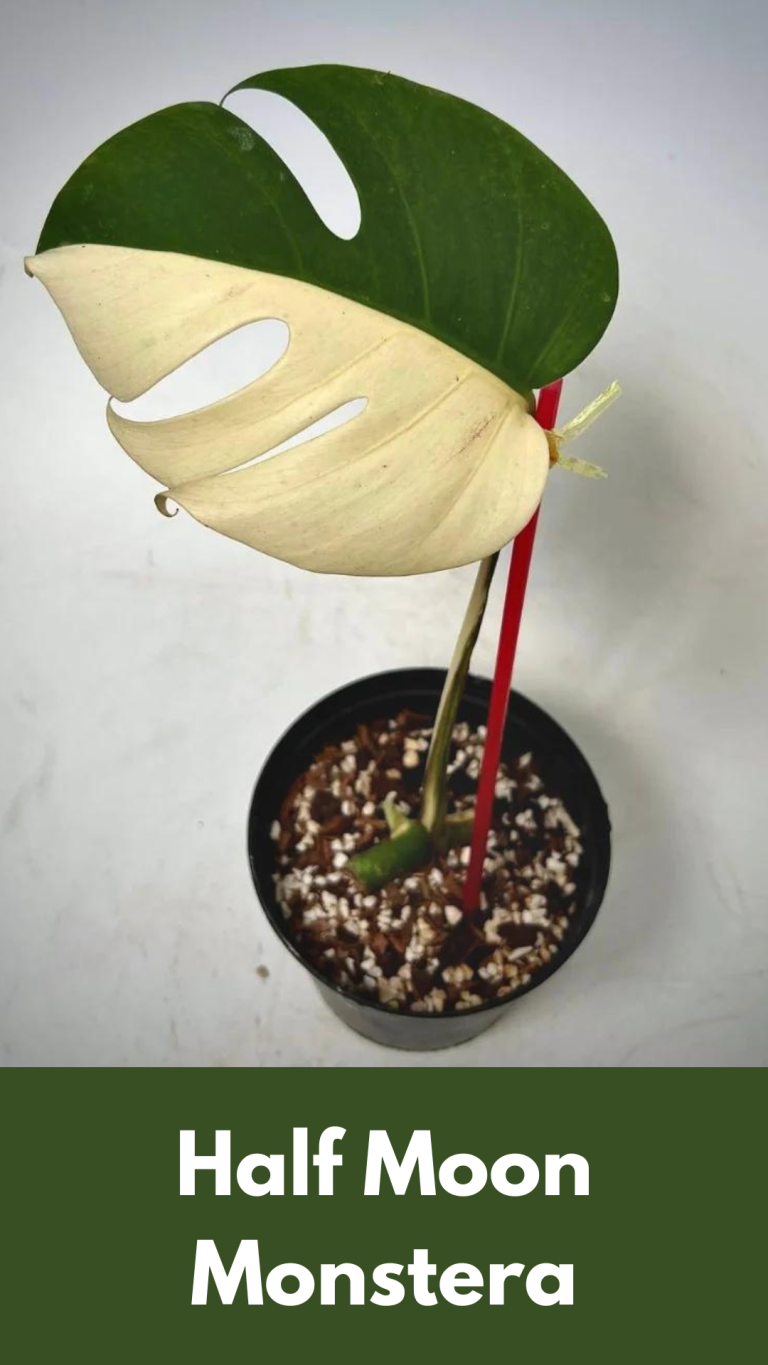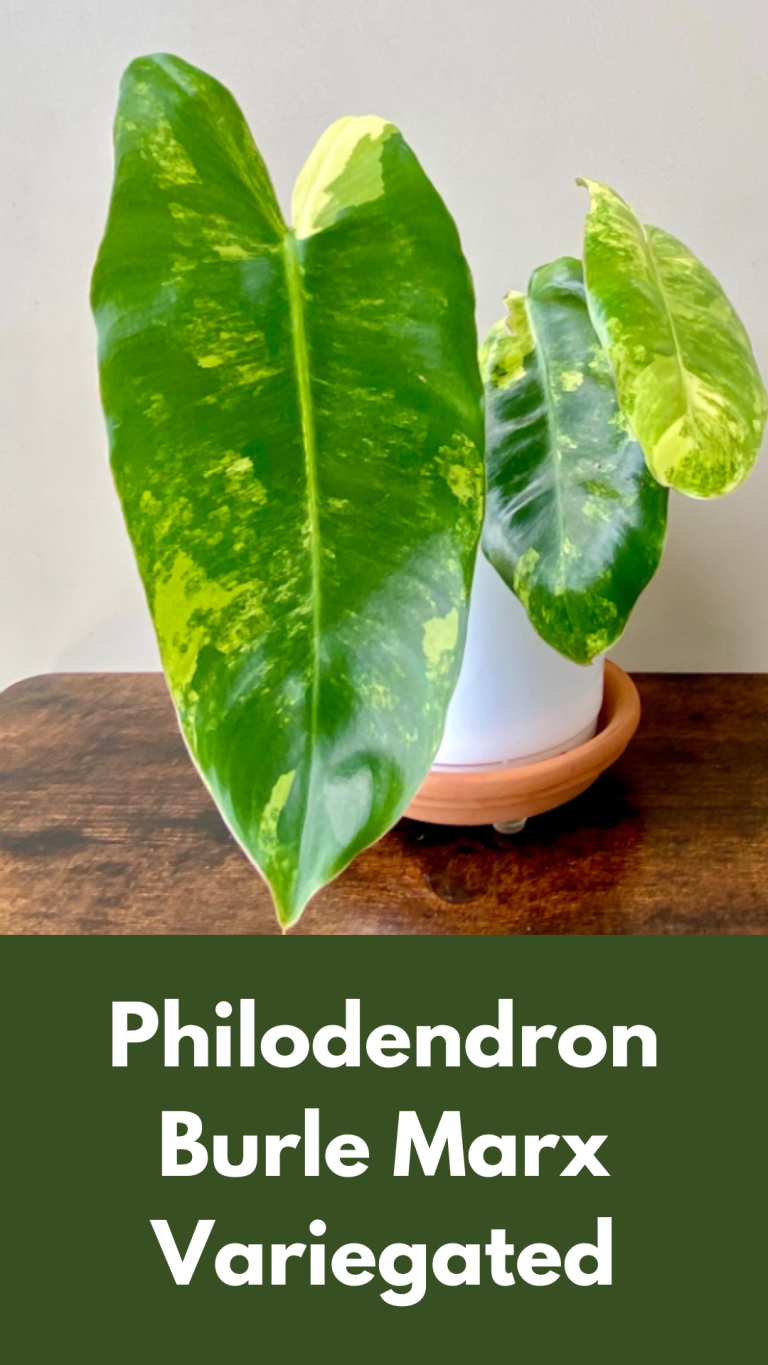Chandni Flower Plant
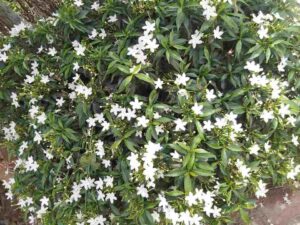
Chandni Flower Plant, also known as crepe jasmine in English, is an evergreen perennial shrub. This plant is native to India. The flower of this plant is white in color with pinwheel shape and hence also known by the name of pinwheel flower. Stems of this plant when broken produce a milky fluid. So it is also called milk flower. The flower of this plant mainly blooms at night, so known as chandni which means moonlight. This flower is often used to worship the god. This flower is offered mainly to Lord Hanuman.
This plant is known by different name in different language:-
✓ Tamil: Nandiyavattai
✓ English: Moonbeam, Carnation of India, Crape Jasmine
Botanical classification
The scientific name of Chandni Flower Plant is Tabernaemontana Divaricata and its botanical classification is given below:
| Kingdom | Plantae |
| Division | Magnoliophyta |
| Class | Magnoliopsida |
| Order | Gentianales |
| Family | Apocynaceae |
| Genus | Tabernaemontana |
| Species | divaricata |
Botany of plant
Chandni Flower Plant mainly grows to a height of 1.5 – 1.8 meters and is dichotomously branched.
Leaves
This plant bears large,glossy dark green leaves. Leaves are 15 cm in length and 5 cm in width.
Flowers
The flowers of this plant are snow white in color and possess a pleasing fragrance. The inflorescence is called cyme. The main blooming season is spring. Large number of flowers and flower buds are seen during rainy season until Sept, Oct and Nov. However , flowers are noted year round. Flowers may be born on axils or may be terminal. Flowers are mostly unisexual with five waxy petal arranged in a pinwheel pattern with six stamen.
Read: Champa Flower
Types of Chandni Flower Plant
There are six types of Chandni Plant as explained below:-
1. Single Chandni

This is most commonly found and grown variety. Single flowered means the petals are seen in single row. It grows well in both Pot and Ground. Single flowered varieties do not have any fragrance. Too much care isn’t needed. Full sunlight and Regular watering is enough care.
2. Double Chandni
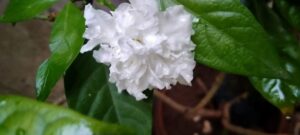
It is called so because it contains two rows of petals. The flowers are snow white and glossy. Double flowered varieties have light scent.
3. Mini Chandni
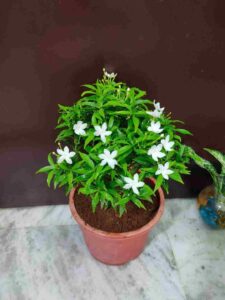
There is another dwarf type called mini Chandni. The plant is small, planted in pots and this variety produces a large number of flowers which is perfect to keep indoors.
4. Pink Variety
You all have seen white flowers of Chandni plant. But, There is a variety that produce pink flowers. It looks beautiful. The petals are light pink with a dark pink dot at centre.
5. Chinese Variety
If you want a variety that grows fast and gives you flowers Within less time, then this variety is for you. It has spreading nature.
6. Variegated Chandni
The leaves of this plant has mixed colour of green and white. It has both floral and foliage beauty. Too much care isn’t needed.
Read: Wave Of Love Plant
Propagation/Growing Methods
The Chandni flower plant is propagated through cuttings. The best time to grow Chandni Flower Plant is from March-May and Aug-early Oct. For cuttings, best season for growing is the rainy season.
For the propagation of this plant from cuttings, 3-4 healthy cuttings of the plant are required.
Prepare the potting mixture according to your need and select the container of proper size. Proper amount of sunlight and moisture should be ensured after planting the cuttings.
Following steps should be followed while growing Chandni Flower Plant from the cutting:-
- 3- 4 cuttings from tender plants are taken. Tender cuttings have higher moisture content and can grow easily.
- The cutting should be made just near the node.
- A small pot filled with potting mixture is selected in which the cuttings are inserted and watered thoroughly.
- The pots with cuttings are placed in bright sun condition.
- After a certain time the cuttings will develop roots and leaves.
- After the cuttings has developed 5-6 leaves, it should be placed in the place receiving 5-6 hours of daily sunlight.
Read: Brahma Kamalam
Care
Though much care isn’t needed for Chandni Plant, There are some things to know which can give great results:-
Temperature
Chandni is a tropical plant. So it requires a warm and moist climate for proper growth and development. The best temperature to grow this plant lies between 20-35 degree celsius. Frost is harmful for the growth and development of plants. So, the plant should not be grown during winter months. You can also grow this plant during the rainy season if you were able to ensure proper drainage.
Light
Chandni is a sun loving plant. This plant can perform well in both direct sun and partial shade conditions. 6-7 hour of daily sunlight is ideal for its proper growth. Full shade conditions may result in stunted growth. Some says, their Chandni plant isn’t giving flowers and leaves get yellow, the one reason behind this is lack of sunlight and another reason is too much watering.
Soil
Chandni Flower Plants can grow in any type of soil but the soil should be well drained. Waterlogged conditions result in root rot. So, Proper drainage is crucial. It can perform well in slightly acidic soil having pH 4 to 6. In alkaline soil this plant may develop chlorosis.
Potting mixture
This plant can also be grown in pots successfully. However, for this one has to prepare a good soil mix. The mixture of 30% cow dung and 70% good garden soil can be used as a potting mixture. For the soil with higher clay content, you should also include sand in the mixture and the mixture comprises 30% cow dung, 20% sand and 50 % good garden soil.
Alternatively, the potting mixture can also be prepared by using the following constituent in the mentioned fraction.
✓50% garden soil
✓20% coco peat
✓25% compost
✓5% neem cake
Fertilizer
Proper fertilization is essential for its proper growth and development. This plant should be fertilized in the months of September and January. Cow dung compost, neem cakes and two tea spoon full bone meals should be applied.
You can also use Mustard cake liquid fertilizer, SSP, NPK 20-20-20, Vermicompost, Cocopeat for your Plant.
Watering
This plant requires regular watering. However, over watering is harmful. Soil should be moist but not be waterlogged. Finger tests can be performed to determine whether watering is required or not. Do not water the plant if the top 1 inch of soil sticks to your finger. Two irrigation should be done (Morning and Evening) during dry summer season with high temperature.
Pruning
Pruning is the judicious removal of unwanted branches and stems. Pruning of Chandni plant helps to maintain size and its vigour. If you want to grow indoors, then pruning is must.
Uses/Benefits
This plant is mainly cultivated in gardens for its showy fragrant flower, foliage beauty etc. This flower is often used to worship god in hindu temples. So this is a sacred flower. Beside this it has many other uses which are mentioned below:
- Chandni Flower Plant can be used as a specimen plant. Also, it can be used as a hedge plant.
- The juice from the flower bud of the plant is mixed with oil and is used to treat inflammation.
- This plant is also used in dental care, for scabies, as cough medicine and for eye ailments.
Pests
Common pests of Chandni plant are Caterpillars, Whiteflies, Scales, Nematodes, and Sooty mold.
Prevention:- Spraying Of Neem Oil In Every 30 Days.
Final Verdict
This Flowering plant is elegant to grow as the flowers are extremely beautiful. The plant is easy to grow, So – A busy person can also add this in their list.

